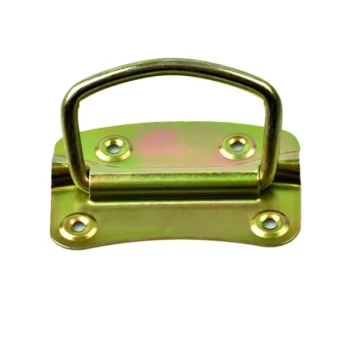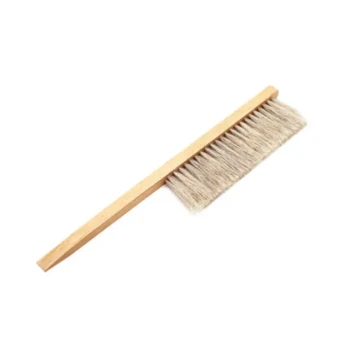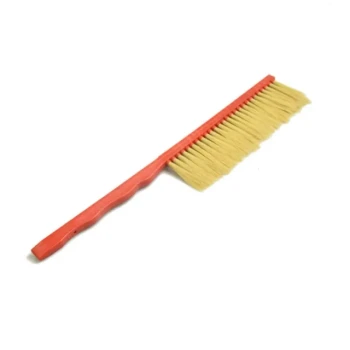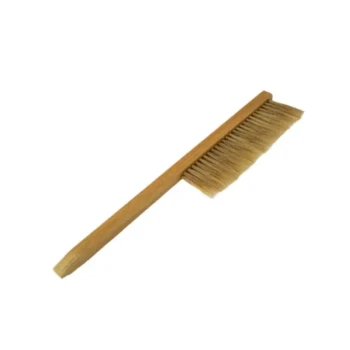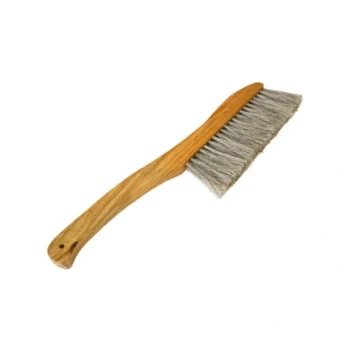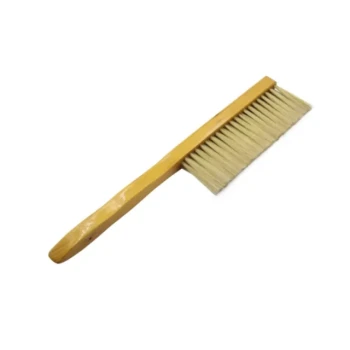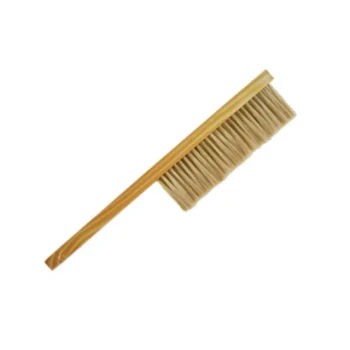Yes, plastic beehives are a very good option for many modern beekeepers. They offer significant advantages in durability, pest resistance, and ease of maintenance over traditional wood hives. While wood remains a perfectly viable and traditional choice, plastic components solve several common pain points, making them a practical and increasingly popular alternative.
The decision between plastic and wood hives is not about which is universally "better," but about which material's strengths align with your specific goals. Plastic excels in durability and low-maintenance convenience, while wood offers natural breathability and a lower initial cost.
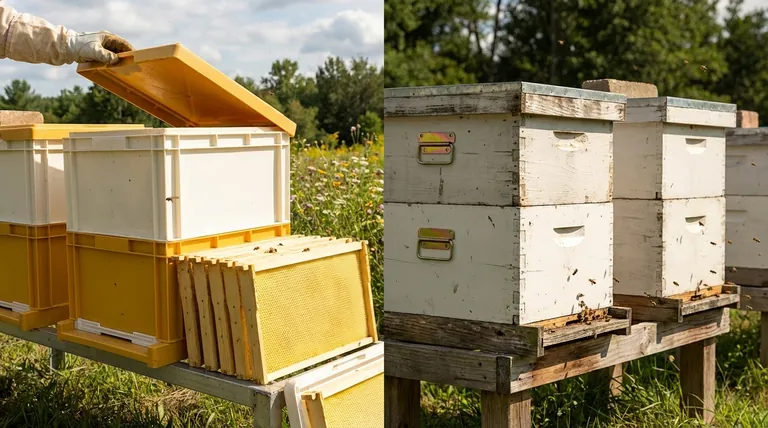
The Case for Plastic: Durability and Convenience
For beekeepers prioritizing longevity and reduced labor, plastic presents a compelling set of benefits. The material is engineered to withstand the rigors of beekeeping with minimal upkeep.
Unmatched Durability
Plastic hive components are incredibly tough. They resist the warping, splitting, and cracking that can affect wood hives over time, especially in harsh weather conditions.
Because they are non-porous, they are also completely impervious to pests like wax moths, which can destroy wooden frames and foundation. This durability extends to the extraction process, where plastic frames hold up exceptionally well to the forces of a honey extractor.
Simplified Maintenance
Cleaning and reusing plastic components is remarkably efficient. Unlike wood, which can absorb honey and propolis, plastic can be easily scraped clean with a hive tool.
For a deep clean, plastic frames and foundations can even be power-washed and then simply re-coated with a thin layer of beeswax, making them ready for reuse. This saves significant time and the cost of replacement materials.
Ease of Use for the Beekeeper
Many plastic hive components come pre-assembled and ready to use right out of the box, eliminating the time-consuming task of building and wiring frames.
Furthermore, many plastic foundations are black, which creates a high-contrast background that makes it significantly easier to spot tiny white queen eggs, a critical task for assessing colony health.
The Traditional Alternative: Wood's Natural Advantages
While plastic offers modern convenience, traditional wood hives have remained the standard for centuries for good reason. They provide a different set of benefits centered on the hive's internal environment.
Superior Moisture Management
Wood is a natural, breathable material. This allows it to absorb and release moisture, helping to regulate the hive's internal humidity. Proper moisture management is crucial for preventing mold and ensuring the colony's health, particularly during damp winters.
Environmental and Cost Profile
Wood is a renewable, repairable, and biodegradable resource. For beekeepers focused on sustainability, this is a major advantage. While wood requires more maintenance (like painting) to protect it from the elements, it is often less expensive to purchase initially.
Understanding the Trade-offs
Choosing a hive material requires a clear understanding of the compromises involved. Neither option is perfect, and the ideal choice depends on your climate, management style, and priorities.
Insulation: A Double-Edged Sword
Plastic is a poor conductor of heat, giving plastic hives good thermal insulation. This can be a major benefit in cold climates, helping the colony maintain a stable temperature during early spring and late autumn.
However, this same property can be a disadvantage in hot climates, as the hive can overheat if it lacks proper ventilation.
Moisture and Ventilation
The impermeability that makes plastic resistant to pests also means it traps moisture. Condensation can build up on the inner walls and drip down onto the bees, which can be fatal in cold weather. Beekeepers using plastic hives must be more vigilant about providing adequate ventilation.
The Need for Wax Coating
Bees will not naturally build comb on bare plastic. For bees to accept and draw out plastic foundation, it must be coated with a layer of real beeswax. Most new plastic foundations come pre-waxed, but this coating can wear off after cleaning, requiring the beekeeper to re-wax it.
Making the Right Choice for Your Apiary
Your decision should be guided by a clear assessment of your goals, your environment, and the amount of labor you are willing to invest.
- If your primary focus is minimizing labor and maximizing equipment lifespan: Plastic is the superior choice due to its extreme durability, pest resistance, and ease of cleaning.
- If your primary focus is providing a natural, breathable environment and a lower initial cost: Traditional wood hives remain an excellent and time-tested option.
- If you are a beginner or have physical limitations: The convenience of pre-assembled, durable, and often lighter plastic components can significantly lower the barrier to entry and simplify hive management.
Ultimately, the best hive is one that is well-managed, and choosing the right material is the first step in that process.
Summary Table:
| Feature | Plastic Hives | Wood Hives |
|---|---|---|
| Durability | Excellent (warp/crack resistant) | Good (can warp/split over time) |
| Pest Resistance | Excellent (impervious to wax moths) | Requires maintenance |
| Maintenance | Low (easy to clean, power-washable) | Higher (needs painting, scraping) |
| Moisture Management | Requires ventilation (traps moisture) | Excellent (natural breathability) |
| Initial Cost | Higher | Lower |
| Ideal For | Low-maintenance, longevity, cold climates | Natural environment, hot climates, lower upfront cost |
Ready to upgrade your apiary with durable, low-maintenance equipment?
HONESTBEE supplies commercial beekeepers and equipment distributors with high-quality, wholesale-focused beekeeping supplies. Our selection of durable plastic hive components is designed to save you time and money on maintenance, extending the lifespan of your equipment.
Let us help you build a more efficient and productive operation.
Contact HONESTBEE today for wholesale pricing and discover the right equipment for your specific needs.
Visual Guide
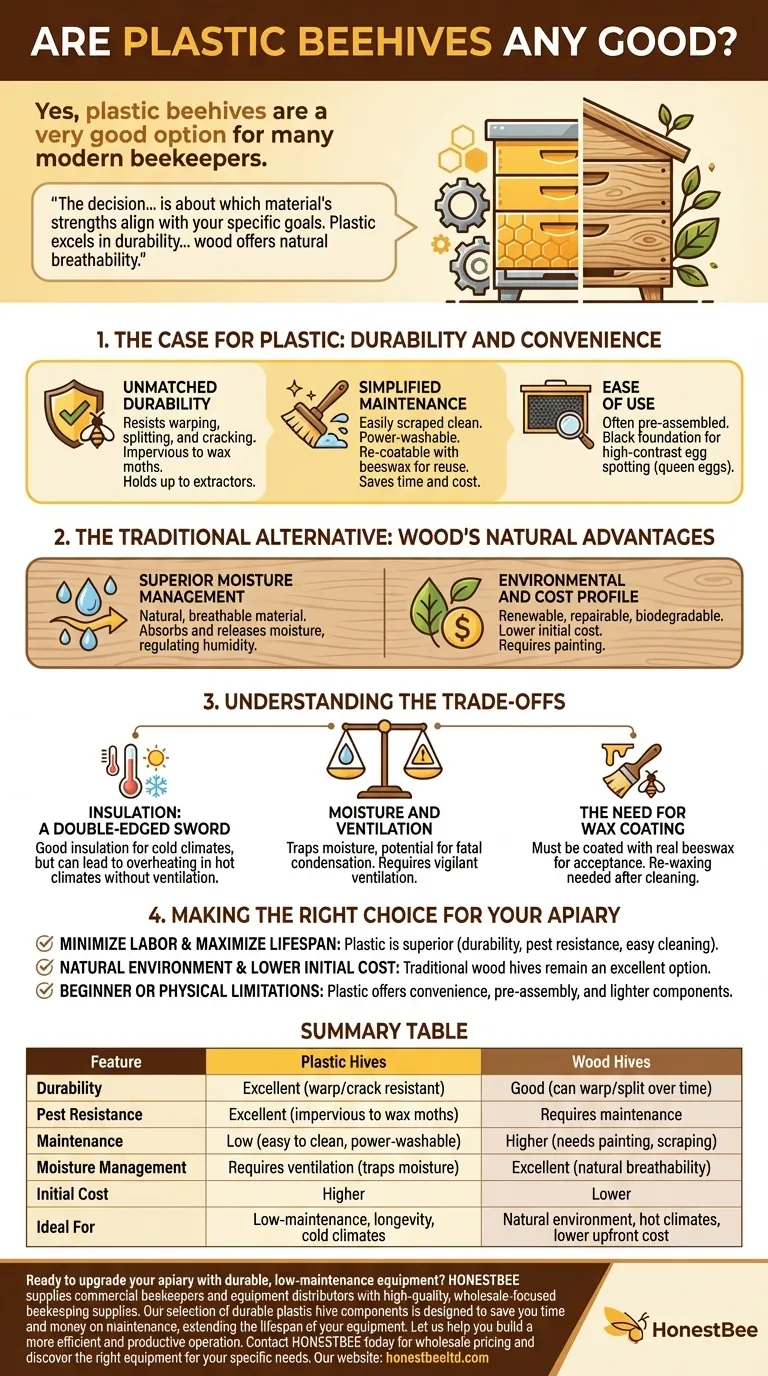
Related Products
- Professional Drop-Style Hive Handles for Beekeeping
- Professional Grade Foldable Beehive Handles
- Professional Galvanized Hive Strap with Secure Locking Buckle for Beekeeping
- Boardman Entrance Bee Feeder Durable Galvanized Steel and Wood Construction for Beekeeping
- Wooden Bee Brush with Double-Row Horsehair Bristles
People Also Ask
- What types of gloves are available for beekeeping? Choose the Right Protection for Your Hive
- What makes polyurethane foam environmentally friendly? The Surprising Benefits of a Durable, Inert Material
- Why is proper beekeeping equipment important? Essential for Safety and Hive Health
- What equipment do I need to start beekeeping? The Essential Beginner's Guide
- What are the characteristics of the bristles on a bee brush? Designed for Gentle Persuasion, Not Force

